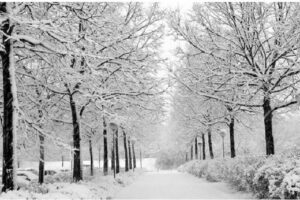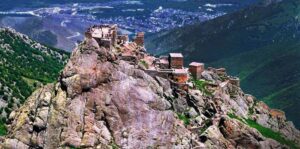East Azerbaijan is a cold region in northwest Iran. It is a land known for the resilience of its fighters like Sattar Khan and Baqer Khan, the ingenuity of its women artists, the steadfastness of its nature, as well as delicious and colorful foods. The name of this province is believed to have its roots in the word “Azar,” which means fire, indicating its ability to endure the harsh winters of the region without flinching.The estimated population of this province is 4 million.
History
The history of East Azerbaijan dates back to the rule of the Medes. The land, as we know it today, is the result of repeated changes and transformations. In the 1947 division of Iran, large parts of the present-day East Azerbaijan, along with Astara and Ardabil, were named the third province of Iran as “Eastern Azerbaijan”. Later, the city of Astara and its surroundings were separated from the province, and the city of Maragheh from West Azerbaijan was joined to it. In 1993, with the separation of Ardabil and the formation of a new province, the province of East Azerbaijan was defined by its current borders.
Geography
East Azerbaijan is bordered by the countries of Azerbaijan and Armenia to the north, West Azerbaijan province to the west and southwest, Ardabil province to the east, and Zanjan province to the south. The Aras River, a fast-flowing border river, and the Sahand Mountains are among the most famous natural features of this province. Walnut, almond, fig, grape, apricot orchards, and wild jujube trees can be seen in various parts of the province.

Climate
Azerbaijan is one of the coldest and snowiest provinces in Iran, but due to its vastness, it experiences different weather conditions throughout the year. Although the hot season in this province is very short, people in cities of Jolfa and Miyaneh experience temperatures above 40 degrees Celsius in summer.
The cold season in this region starts from about October and lasts until mid-Apri.

Cities of East Azerbaijan Province
The people of East Azerbaijan province are known for their hard work, orderliness, and hospitality. The province consists of 21 cities, many of which host guests from all over the country in different seasons of the year. This province is a unique destination for those interested in cold regions, snowy areas, and winter sports.
The cities of this province are Mianeh, Sarab, Marand, Charuymaq, Ahar, Bostanabad, Shabestar, Varzaqan, Harris, Maragheh, Tabriz, Kalibar, Hashtrud, Osku, Jolfa, Khodafarin, Malekan, Azarshahr, Bonab, Ajabshir, and Horand.

Tabriz
Tabriz is the largest city in northwestern Iran and the most important industrial center in the Azerbaijan region. Throughout history, it has served as the capital of Iran for several periods and has always been a significant and strategic city. Tabriz is the primary tourist destination in East Azerbaijan province, attracting visitors not only for its historical and natural attractions but also for its unique cuisines. The city experiences windy weather and cold, snowy winters. Some of the most notable attractions in Tabriz include The Grand Bazaar of Tabriz, The Blue Mosque, a stunning example of Persian architecture with intricate tilework; Maqbaratos-Shoara, the Mausoleum of Poets, where many famous Iranian poets are buried. Kandovan, a historic village with houses carved into the mountainside. The Municipality Museum and the Qajar Museum, showcasing the city’s rich history and culture. Eynali Gondola Lift and Park, offering panoramic views of the city. El Goli Park, a beautiful park with a lake and gardens. Historic houses, such as the Constitutional House, Saqqa Khaneh, Khatai House, Hariri House, Nikdel House, Sharbat Oghli House, and the House of Ostad Shahriyar.

Jolfa
Jolfa is another fascinating city in the province that welcomes many guests from all over the country every year. It is located on the border of Iran with Nakhchivan and Armenia and is considered the central part of the Aras Free Trade Zone. Jolfa has many attractions, including The Aras-Jolfa border road, The Aras River, The Aras Dam, The Asiab Kharabe Waterfall, The St. Stepanos Monastery, The Choopan Church, The Kordasht Bathhouse,The Khwaja Nazar Caravanserai, The Ishtebin Village, The Zia ol-Molk Bridge and Jolfa Border Market.

Ahar, Harris and Varzaqan
The cities of Ahar, Varzaqan, and Harris are located in the north and east of Tabriz and are home to some of the most important tourist attractions in the province. Babak Fort, built by Babak Khorramdin in the 3rd century AH, Arasbaran Forest, Ahar Jameh Mosque, and Ahar Bazaar are some of the must-see places in the region.

Marand
Marand is one of the oldest cities in the province. Some historians believe that the history of this city dates back to the third millennium BC. Shah Abbasi Caravanserai, Pirbala Mosque (the tomb of Noah’s wife), Pirbala waterfall, dogeijan cave, and dogeijan village are some of the interesting places for travelers to this region.

Ajabshir, Bonab and Maragheh
This part of the province is located on a fertile plain, alongside several rivers. Maragheh is the second largest city in the province. Maragheh observatory, the tomb of Owhadi Maraghaei, Gonbad Ghaffarieh next to the Sufi Chay River are some of the most important attractions that you should not miss visiting in this part of the province.

Accommodations
The number of hotels and accommodations in East Azerbaijan Province is sufficient, and travelers can easily choose their preferred hotel. El-Goli, Laleh Park, Gostaresh, Morvarid, Shahriyar, and International Hotel in Tabriz, the Grand Hotel in Maragheh, Paradise Hotel in Kalibar, tourist hotels in Marand, Sarab, and Jolfa, Aras Mountain Hotel in Jolfa, and the Grand Pardis Hotel in Ajabshir are some of the hotels in this province which are ready to host tourists throughout the year.
Galosang Eco-lodge in Kalibar, Homa Eco-lodge in Kandovan, and Ouba Tribal-style Eco-lodge are suitable for those who want to stay in local environments in the province.

Local Foods
Travelers to East Azerbaijan will enjoy the pleasant taste of local foods along with their journey. Besides Koofteh and Azari Dizi, which are the most famous foods in this province and all travelers immediately try them, various local foods such as Bonab Kabab, Dolmeh Barg-e Mo, Dolmeh Kalam, Khitab, Doymaaj, Binab Khoreshi, Ayran Ashi, Sughan Ashi, and various breads and pastries like Tabrizi Bread, Ahar Bread, Oily Bread, Gharaabieh, Sujugh, and Baslogh are foods that make the trip more colorful and memorable for tourists.
In addition to lunch and dinner, Azaris also use various jams as desserts, among which orange peel, plum, fig, and citron jams are the most popular.
Don’t miss out on the unforgettable taste of boiled and fried potatoes which are sold by the street vendors at the Tabriz Bazaar.

Restaurants
Shahgoli Restaurant, Rahbari Restaurant, Nasiri Bonab Kebab, Haj Issa Restaurant, Haj Ali Restaurant, Imani Garden Restaurants, Jalali, and Chahar Bagh in Sardroud, Shazdeh Traditional Restaurant, Mozafariyeh Restaurant, and dozens of other restaurants in Tabriz and cities of East Azerbaijan are places where you can try various local foods and traditional Azerbaijani kebabs.

Handicrafts
Carpet and rug weaving, Kilim, traditional prints, embroidery, cloth weaving, silverwork, and Mamaghani embroidery are among the most important handicrafts of East Azerbaijan Province.
Pottery, needlework, basket weaving, making local instruments, stone carving, and traditional jewelry making are also done in most parts of the province.

Souvenirs
Most souvenirs of this province consist of various local sweets; Nogha, Rees, Gharaabieh, Halva-ye Havij (carrot), Osku’s Halva-ye Gerdu (walnut)-ye, Baqlava, Sujugh, and Baslogh are sweets that can be purchased as souvenirs of a trip to Azerbaijan. Alongside these, Tabriz nuts, handicrafts, and handmade jewelry of this province can be a good source of income for those who are waiting at home for the return of tourists.

Customs and Traditions
Chelleh (Chelleh Gajehsi), Charshanbe Suri, and Nowruz are national ceremonies that Azerbaijanis are very committed to holding.
Engagement, betrothal, and wedding ceremonies are also held in this province with abundant customs and traditions that Azerbaijanis still adhere to.
On Chelleh and Charshanbe Suri nights, banquets are held for newlyweds who have not yet held their wedding ceremony, along with traditional music and singing. Aşıqs read poetries and hold ceremonies in different cities on special occasions. They play music and repeat local poems the poets of which are often unanimous.








